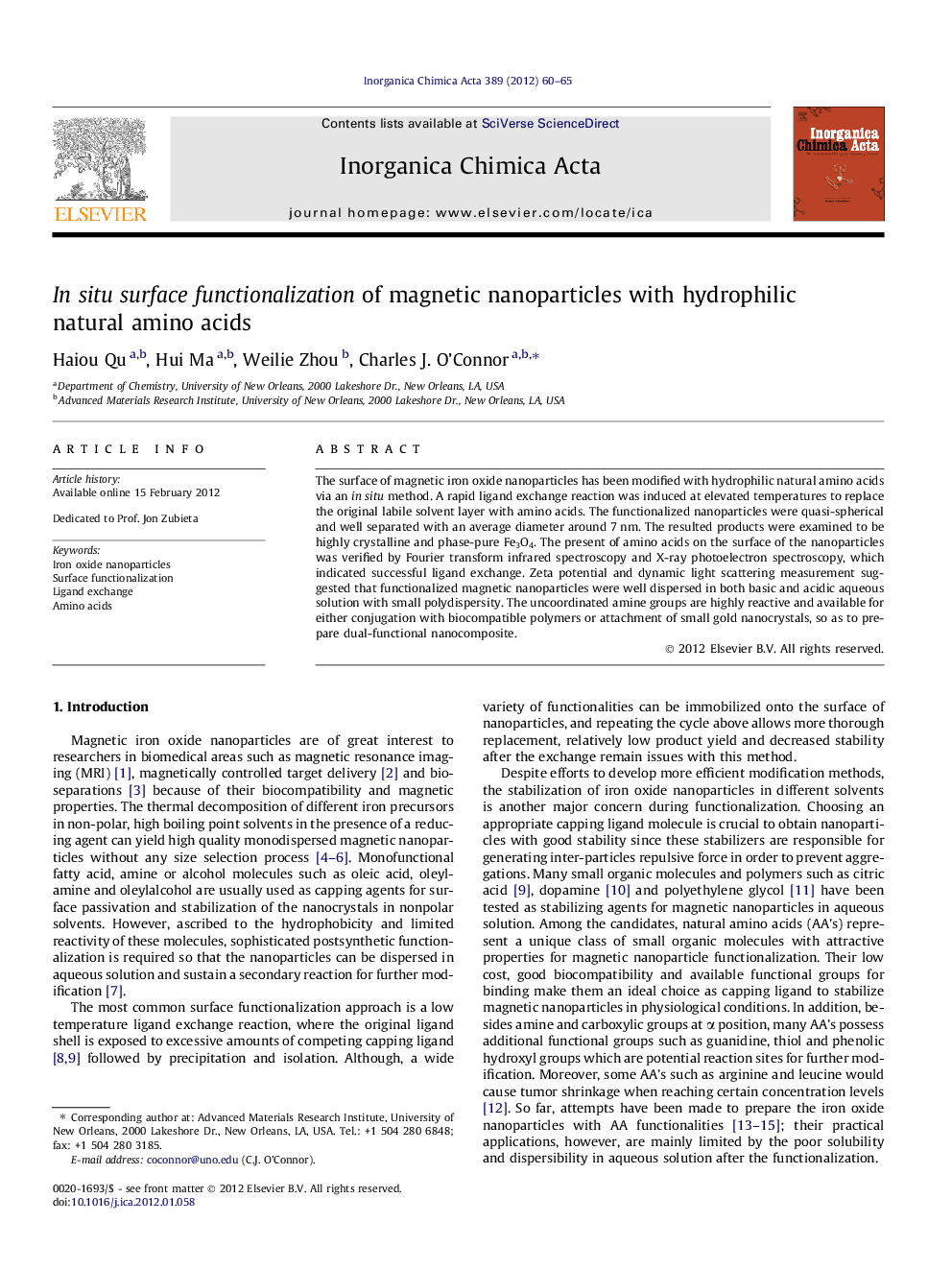| Article ID | Journal | Published Year | Pages | File Type |
|---|---|---|---|---|
| 1310791 | Inorganica Chimica Acta | 2012 | 6 Pages |
The surface of magnetic iron oxide nanoparticles has been modified with hydrophilic natural amino acids via an in situ method. A rapid ligand exchange reaction was induced at elevated temperatures to replace the original labile solvent layer with amino acids. The functionalized nanoparticles were quasi-spherical and well separated with an average diameter around 7 nm. The resulted products were examined to be highly crystalline and phase-pure Fe3O4. The present of amino acids on the surface of the nanoparticles was verified by Fourier transform infrared spectroscopy and X-ray photoelectron spectroscopy, which indicated successful ligand exchange. Zeta potential and dynamic light scattering measurement suggested that functionalized magnetic nanoparticles were well dispersed in both basic and acidic aqueous solution with small polydispersity. The uncoordinated amine groups are highly reactive and available for either conjugation with biocompatible polymers or attachment of small gold nanocrystals, so as to prepare dual-functional nanocomposite.
Graphical abstractThe surface of iron oxide magnetic nanoparticles has been modified with hydrophilic natural amino acids via an in situ method. The resulted products which share same core materials and differ only in surface composition are quasi-spherical in morphology and narrowly distributed in size. The organic layers are highly reactive toward noble metal nanocrystal attachment or reaction with other molecules.Figure optionsDownload full-size imageDownload as PowerPoint slideHighlights► Iron oxide magnetic nanoparticles were functionalized with hydrophilic amino acids. ► The functionalization was achieved via an in situ method. ► The functionalized nanoparticles are quasi-spherical in morphology and narrowly distributed in size, and they differ only in surface composition. ► The uncoordinated amine groups are highly reactive toward noble metal nanocrystals attachment or polymer conjugation.
